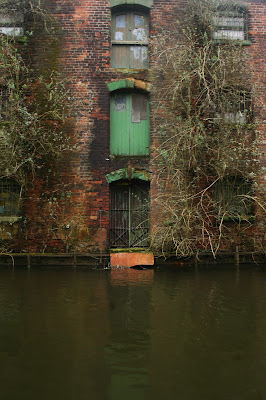The Frayed Edges: Tales from the Other Side of the Cut
Along the frayed edges of the Birmingham and Black Country canal system are, peppered here and there, the tattered buildings of those areas’ industrial past. Some will eventually be torn down, and others will become blurred with the new-builds of the developers, made clean and refreshed. Many such buildings have already met this fate, either demolished or saved. But in both instances the strange and wonderful canal-side spirits who inhabit them leave.
William Blake, in his poetry and art, saw the world through a lens of myth and imagination, one which aligned with ancient folklore traditions. He fashioned a spiritually infused landscape, alive with fey spirits.
The inhabiting spirits, though, dwelled in natural landscapes: those that were minimally influenced by human activity, such as forests, meadows, hills, and sacred waters. Liminal landscapes, such as those with prehistoric monuments like standing stones or barrows, had particular significance. Such liminal spaces were considered to be where the veil between the human and fae realms was particularly thin. Blake's work often reflected this belief.
Blake envisioned these untamed environments, this rural “Albion”, as sacred territories where divine and imaginative worlds intertwined, contrasting them sharply with the industrial landscapes which he saw as spiritually barren. The fae guarded the natural world from the encroaching mechanical one, but nevertheless retreated as it advanced. The urban realm was disconnected from the natural rhythms which were governed by the fae, it worked outside the phases of nature and the seasons.
Industrial decay forms such liminal spaces, as nature reclaims the structures of the industrial revolution. The rich hues of handmade brick distinguish old industry from the unambiguous palette of modern builds. Fissures in the brickwork toil as curled roots force their way through, and their branches stretch and twist along the canal banks.
Here, the fae folk have returned, curious and cautious. They weave their lore through those fissures, through the buddleias as they bow down to touch the waters of the cut, and under the arched bridges tinged green with liverwort and ferns. They are timid creatures, at home in these forgotten places, peering through the cracks.
The Building
Cheese and Butter Warehouse (Wolverhampton)
The cheese and butter warehouse is situated in Wolverhampton along the part of the canal system which was run by Birmingham Canal Navigations (BCN) between 1767 and 1948. It had once been sandwiched between Union Mill and the various Albion Works and Mills.
The building complex was probably constructed in the early 1840s. By 1845 it was in the occupation of James and William Barrow, 'corn and butter merchants, cheese factors and tallow chandlers', as listed in a local trade directory. Tallow chandlers were candle makers. A later map marked the surviving building as the 'warehouse' and neighbouring buildings as 'lard refinery', 'stables', 'offices' and 'workers' houses'.
The surviving building rises directly from the edge of the canal, is made from handmade red bricks, and has eight bays and three storeys. An off-centre pediment to the right has three levels of loading doors, one for each storey, with stone keystones above each door.
Around it, similar buildings have either been demolished or converted and made polite additions to the canal side. The old cheese and butter warehouse rudely resists either fate.







